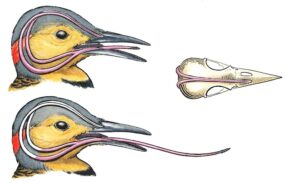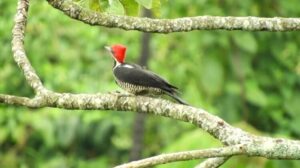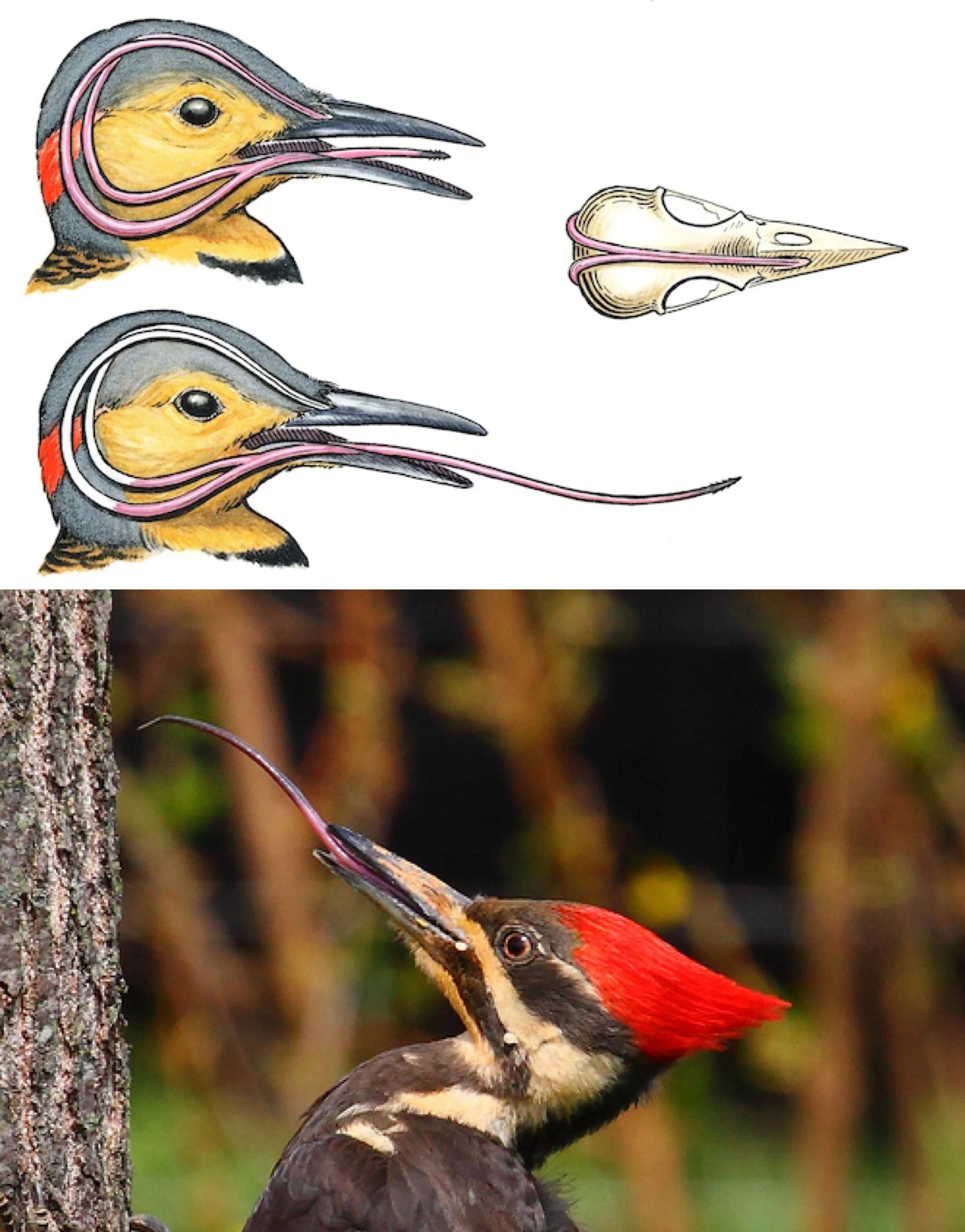Ever wonder how woodpeckers manage to consistently strike trees with such intensity without experiencing crippling migraines or brain damage? These remarkably resilient birds have developed a remarkable combination of adaptations that enable them to flourish in their harsh surroundings. The Enigma of the Undamaged Brain A woodpecker’s blow against a tree has 1,000 times the force of gravity behind it. To most creatures, this devastating impact would be lethal. But because of a mix of anatomical and physiological adaptations, woodpeckers survive. Their specialized beak is one important adaption.

A woodpecker’s beak is made to pierce wood, not stop abruptly like a human hammer would. As a result, less force is applied to the bird’s head. Strong neck muscles and a special brain structure also aid in cushioning the shock of each hit. A Tooth Too Long For Its Bill The remarkably large tongue of woodpeckers is another amazing adaption. This lengthy appendage is vital for squeezing into nooks and crannies and pulling insects from deep within trees.

Woodpeckers are able to extend their tongues to amazing lengths because they have developed a sophisticated system of bones and cartilage called the hyoid apparatus. The hyoid apparatus spreads laterally and backward, with its base secured to the mouth. These projections, known as horns, can extend into the nostril and around the back of the skull in woodpeckers.

The bird’s special arrangement allows it to stow its long tongue when not in use and to extend it fully when necessary. Different Feeding Techniques Although they all have the ability to peck at trees, woodpeckers have developed distinct eating techniques. Certain species, such as sapsuckers, are experts in boring holes in trees in order to harvest sap. Flickers are among those that mostly consume ants.

Conversely, pileated woodpeckers are renowned for their extraordinary digging abilities, which they employ to find carpenter ants buried deep within trees. The woodpecker is an amazing animal. Natural selection’s power is demonstrated by their resistance to the tremendous forces created by their pecking. With lengthened tongues and specialized beaks, these birds have developed a suite of adaptations that enable them to flourish in their difficult environments.


